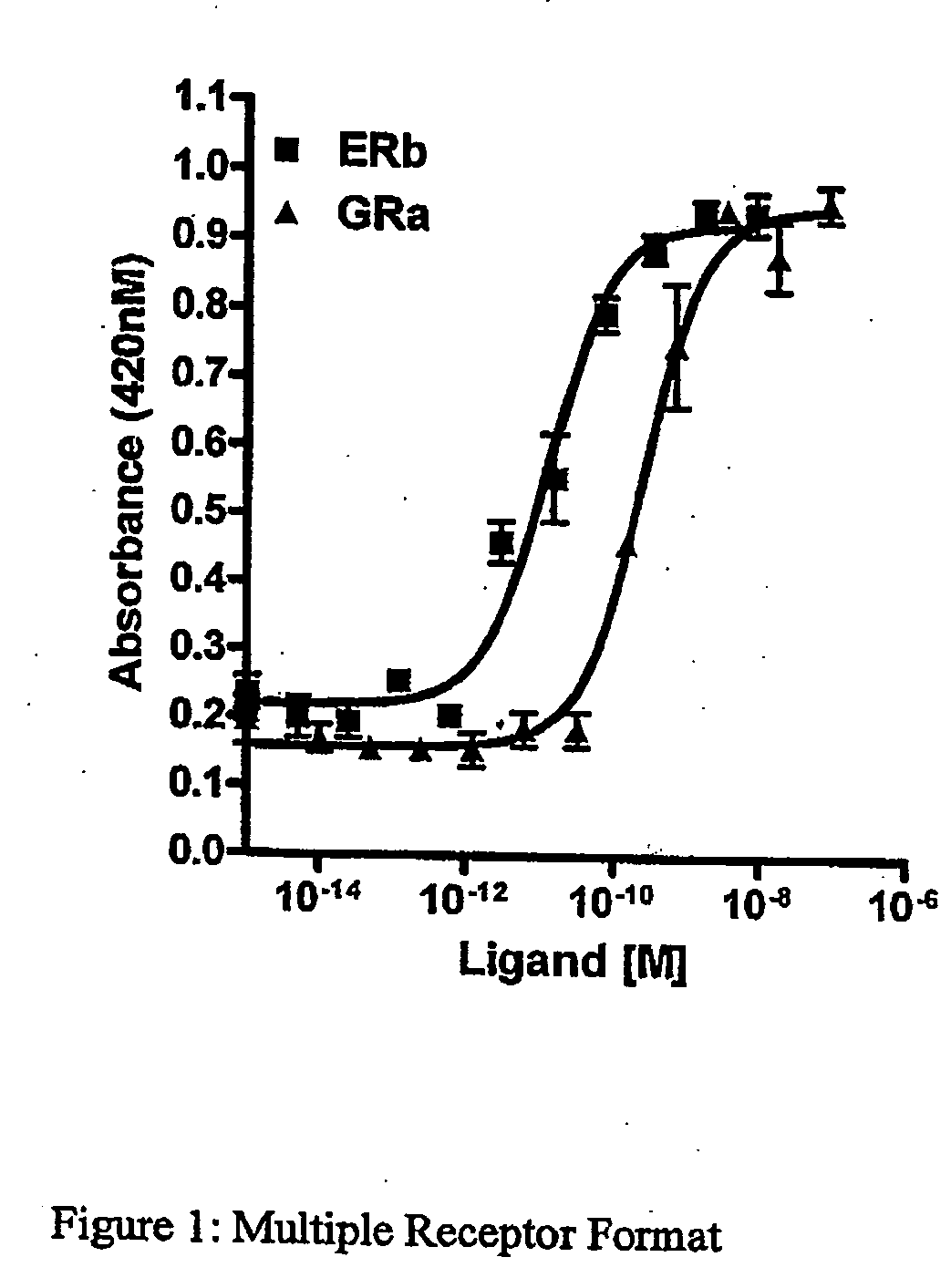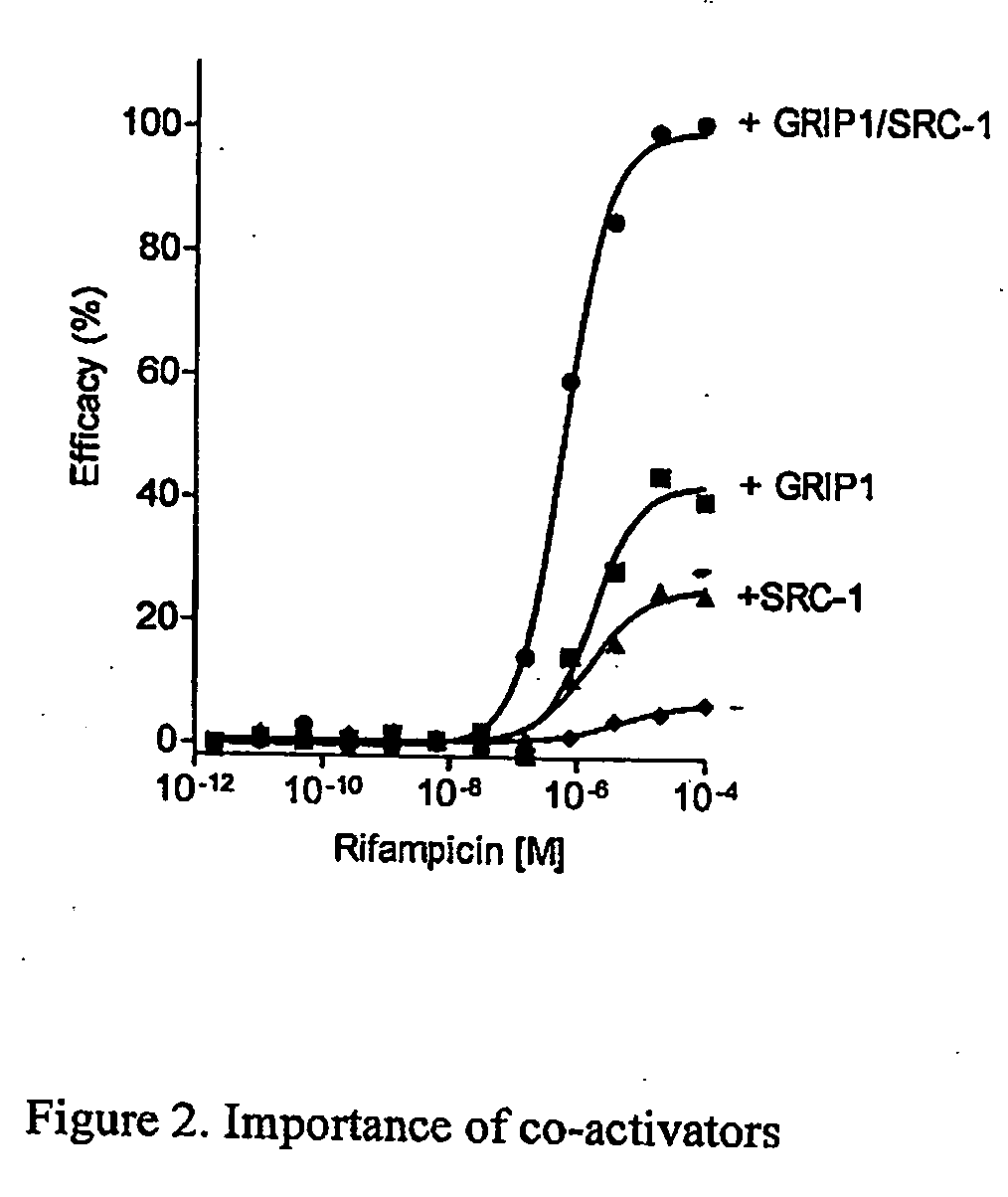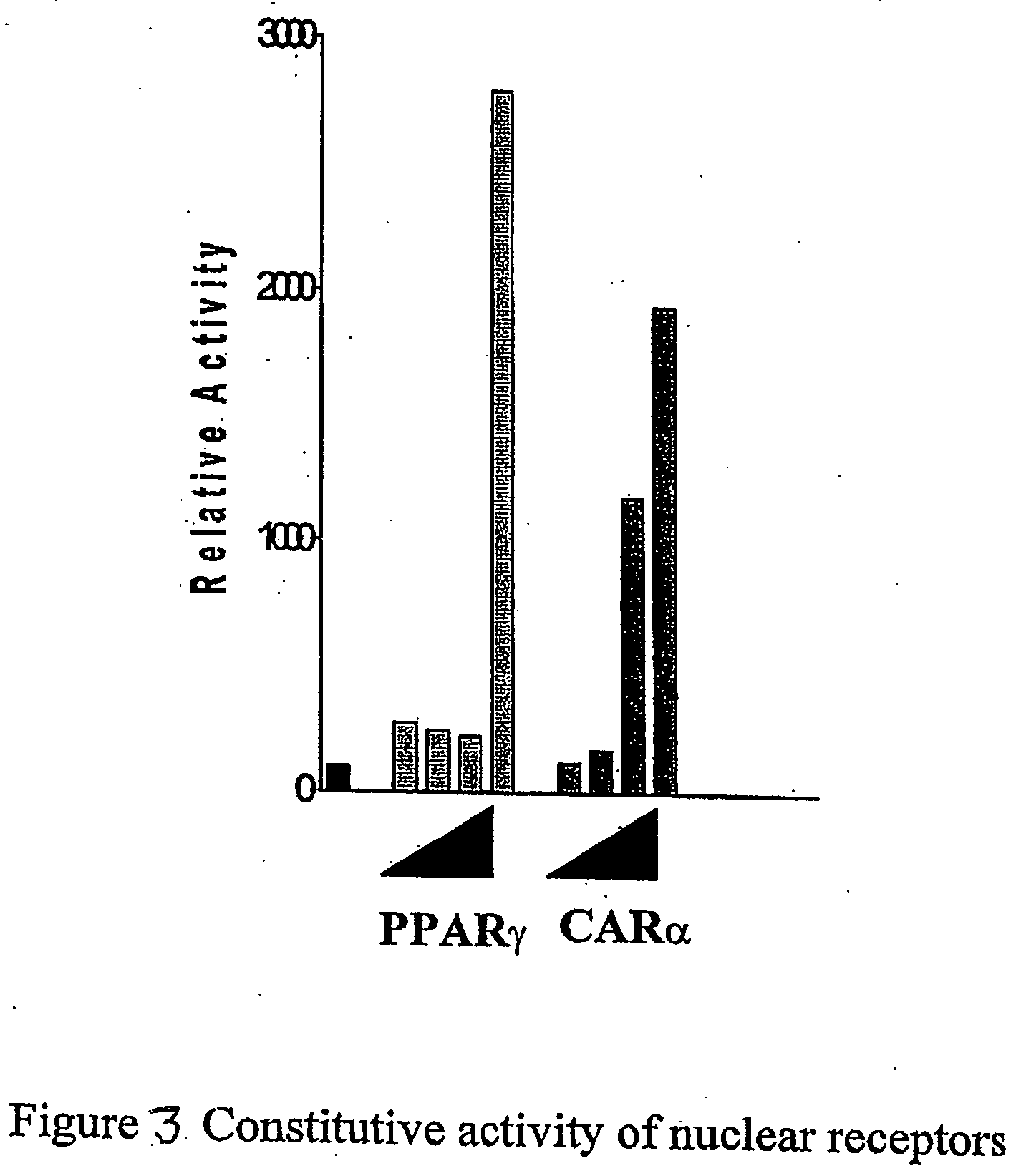Enabling tools to identify ligands for hormone nuclear receptors
a technology of hormone nuclear receptors and tools, applied in the field of enabling tools to identify ligands for hormone nuclear receptors, can solve the problems of hammering the ability to efficiently screen these libraries against so many targets, agonists and antagonists cannot be reliably discriminated, and many binding assays
- Summary
- Abstract
- Description
- Claims
- Application Information
AI Technical Summary
Benefits of technology
Problems solved by technology
Method used
Image
Examples
embodiments
[0090] In some embodiments of each of the methods described herein, the DNA encoding at least one nuclear receptor can comprise a nucleic acid selected from the group consisting of SEQ ID NOs.: 1, 3, 5, 7, 9, 11, 13, 15, 17, 19, 21, 23, 25, 27, 29, 31, 33, 35, 37, 39, 41, 43, 45, 47, 49, 51, 53, 55, 57, 59, 61, 63, 65, 67, 69, 71, 73, 75, 77, 79, 81, 83, 85, 87, 89, 91, 93, 95, 97, 99, 101, 103, 105, 107, 109, 111, 113, 115, 117, 119, 121, 123, 125, 127, 129, 131, 133, 135, 137, 139, 141, and 143 or a nucleic acid homologous thereto In some embodiments, the homologous nucleic acid can have at least 97%, at least 95%, at least 90%, at least 85%, at least 80%, or at least 70% nucleotide sequence identity to a nucleotide sequence selected from the group consisting of SEQ ID NOS.: 1, 3, 5, 7, 9, 11, 13, 15, 17, 19, 21, 23, 25, 27, 29, 31, 33, 35, 37, 39, 41, 43, 45, 47, 49, 51, 53, 55, 57, 59, 61, 63, 65, 67, 69, 71, 73, 75, 77, 79, 81, 83, 85, 87, 89, 91, 93, 95, 97, 99, 101, 103, 105,...
example 1
A General Protocol for Assaying a Single Nuclear Receptor
[0137] The functional cell-based assay Receptor and Selection Amplification Technology (R-SAT™) (U.S. Pat. No. 5,707,798) was modified to develop an assay that allows the investigation of the pharmacological phenotype of one nuclear receptor.
[0138] Cultures of NIH-3T3 cells (available from the American Type Culture Collection, as ATCC CRL 1658) were prepared to 50-60% confluency. On day one, cells were trypsinized, centrifuged and plated at 8,000 cells / well in a 96-well plate in 100 μl / well of Dubelcco's Modified Eagle's Medium (DMEM), 10% calf serum. On day two, cells were transfected using the transfection reagent Superfect® (Qiagen, Inc.) as recommended by the manufacturer. Various doses of the nuclear receptor plasmid DNA were transfected. DNA mixtures included 0.1 to 10 ng / well of receptors DNA, 20 to 30 ng / well of β-galactosidase plasmid DNA (pSV β-galactosidase, Promega) and 15 μl of Superfect®. On day three, the medi...
example 2
Multiple Receptor Format
[0140] To test the amenability of the methods described in Example 1 to a multiple receptor format, NIH-3T3 cells were co-transfected with plasmids encoding the glucocorticoid receptor (GR), the Estrogen Receptor beta (ERB), and β-galactosidase cDNA as described in Example 1. The transfected cells were contacted with known ligands for each receptor and activity was measured as described in Example 1. Positive β-galactosidase responses were indicative of effective ligand / receptor interactions. As shown, selective pharmacological responses to the two ligands were seen, confirming that the methods disclosed herein can be used in a multiple receptor format.
PUM
| Property | Measurement | Unit |
|---|---|---|
| morphology | aaaaa | aaaaa |
| concentrations | aaaaa | aaaaa |
| size | aaaaa | aaaaa |
Abstract
Description
Claims
Application Information
 Login to View More
Login to View More - R&D
- Intellectual Property
- Life Sciences
- Materials
- Tech Scout
- Unparalleled Data Quality
- Higher Quality Content
- 60% Fewer Hallucinations
Browse by: Latest US Patents, China's latest patents, Technical Efficacy Thesaurus, Application Domain, Technology Topic, Popular Technical Reports.
© 2025 PatSnap. All rights reserved.Legal|Privacy policy|Modern Slavery Act Transparency Statement|Sitemap|About US| Contact US: help@patsnap.com



